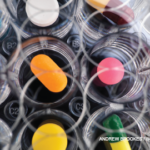Deaths, cardiovascular events, venous thromboembolic events and gastrointestinal perforations were adjudicated by independent, blinded committees following pre-specified definitions.
Results
Overall, 4,998 patients received at least one 15 mg dose of upadacitinib, totaling 15,895.8 patient-years of exposure. Most of this exposure was from studies in RA (RA: n=3,209; PsA: n=907; AS: n=596; nr-axSpA: n=286).1
The rate of adverse events that led to study drug discontinuation was similar across all treatment groups and diseases. Adverse events that led to upadacitinib discontinuation widely varied and included:
- Pneumonia (RA: n=22 of 459);
- COVID-19 (PsA: n=7 of 121);
- Headache (AS: n=3 of 42); and
- Worsening axSpA and pulmonary embolism (nr-axSpA: both n=2 of 20).
The serious infection rate and opportunistic infection rate were similar across all treatment groups and diseases. However, the rate of serious infection was higher with exposure to upadacitinib than with exposure to adalimumab in patients with PsA. The most common serious infection and serious adverse event in patients who received 15 mg of upadacitinib for all diseases was COVID-19-related pneumonia.
In the RA and PsA studies, patients taking 15 mg of upadacitinib more often experienced elevated creatine phosphokinase (CPK) and herpes zoster infection then those on the active comparator treatments. Also, the elevated rates of herpes zoster infection in upadacitinib-treated patients were comparable across all diseases represented in the current study.
Higher rates of nonmelanoma skin cancer occurred in patients with RA and PsA treated with upadacitinib than those who received methotrexate or adalimumab. Rates of malignancy—excluding nonmelanoma skin cancer—were similar across treatment groups and diseases. Similar rates of major adverse cardiac events and venous thromboembolic events occurred across treatment groups and diseases.
Rates of extra-musculoskeletal manifestations, including uveitis and inflammatory bowel disease, were generally low across PsA, AS and nr-axSpA in upadacitinib-treated patients. The highest number of extra-musculoskeletal manifestations was reported for uveitis in patients with AS.
The most common cause of death across all diseases was COVID-19/COVID-19 pneumonia.
Conclusion
With the exception of serious infection in PsA, herpes zoster infection, elevated CPK and nonmelanoma skin cancer, the rates of treatment-emergent adverse events were generally similar for patients treated with 15 mg of upadacitinib and active comparators in RA and PsA. Across patients with RA, PsA, AS and nr-axSpA, upadacitinib demonstrated a generally consistent safety profile, with no new safety risks identified with long-term treatment, as shown in previous reports.
More real-world data—especially for diseases with fewer clinical trials (i.e., AS and nr-axSpA)—are needed to further contextualize and confirm these findings.



